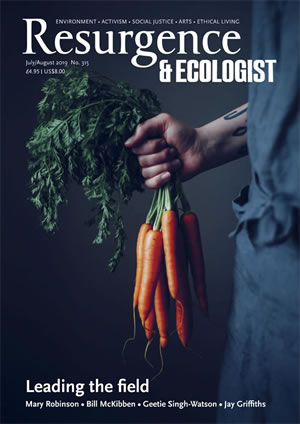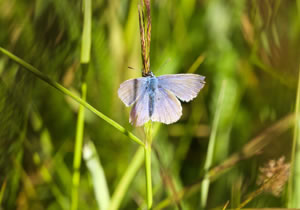If you happen to find yourself in Devon’s South Hams, there’s a chance you might stumble across visual artist Jessica Albarn playing hide-and-seek in a meadow. Only the participants in her game aren’t other people – even children – they’re insects.
Crickets, grasshoppers, bees or butterflies: all are welcome to play. Albarn is known for her detailed fine line drawings on paper and other mediums such as glass, wax, clay and honey. Her latest project is this meadow, a quarter of an acre of land, where she observes arthropods in their natural habitat. “It’s just creeping up on them really,” she says. “Sometimes they go up behind a blade of grass and look at me, and I’ll go around the other side. Then I’ll tune into them, listening and watching.” The irony of Albarn creeping up on creepy-crawlies with her large lens so that she can delve ever deeper into their world is not lost here. She adds: “I’ve spent many happy hours in my field sitting quietly in the long grasses and flowers waiting for a glimpse of the life that goes on there.”
Four years ago, with the help of her father, Keith, Albarn began her work in the meadow. It’s a long-term project that she says is not only about creating a place of research for her as an artist, but also one that supports local wildlife. “I think agriculture has an awful lot to answer for. It worries me a lot,” she says. “With all the insecticides they spray onto the crops, and the fact that a lot of farmers have chopped down so much of the habitat like hedgerows that would surround the field too, it’s totally changed the landscape.
“We need to create safe corridors of land between the agricultural wastelands connecting wildlife populations. Hopefully a network of safe pathways for creatures to feed and breed will help.”
I ask her how this sumptuous meadow, with all its grasslands and rich biodiversity, came to bloom. “Initially it was just grass pasture with animals grazing on it, for centuries maybe,” she says. Because the grass was very thick and dense, she planted things like yellow rattle to “fight the grasses” and make space for other flowers.
Conservation has always been high on Albarn’s list of concerns. She has long been devoted to the plight of the bumble bee, and the preservation of insect species goes hand in hand with her artistic endeavours. The two pursuits are acutely spun together. Where better to feed that occupation, then, than in a field complete with its own palatial ecosystem? “I look to Nature for inspiration, and through my work I try to connect with it, connect others to it, and raise awareness where I can,” she says. “Symbolically the meadow represents a place of peace, serenity and rebirth. And yet it’s a place where life is played out in all its brutality as well as its beauty.”
So how varied is the biodiversity in the meadow? “In terms of insect and animal life it’s thriving,” says Albarn. “Plant-wise it’s very rich, too. We found 25 new plants last year. It doesn’t necessarily look like a chocolate-box meadow, but it is developing and growing all the time. It builds and it builds each year, but it will take ten years for it to reach any kind of real maturity.”
Albarn’s recent show at the Drang Gallery in Salcombe, Devon was informed by this glorious work. She collects flowers from her grassland, which she presses and puts together on paper, and she also makes videos. The more delicate drawings of insects, something of a cult hit among fans, have mostly been created from photos she has taken during her games in the meadow. Others are sketched from observing dead insects she has found or collected, although the ebb and flow of the natural world mean it’s been hard to come by such spoils. “It’s rare to find a good dead specimen, because things are eaten quite quickly, so I tend to find them around and about the meadow, or I use my photography,” she said. Sounds like she needs to put on her game face and pull up those wellington boots. Anyone for a spot of hide-and-seek?







